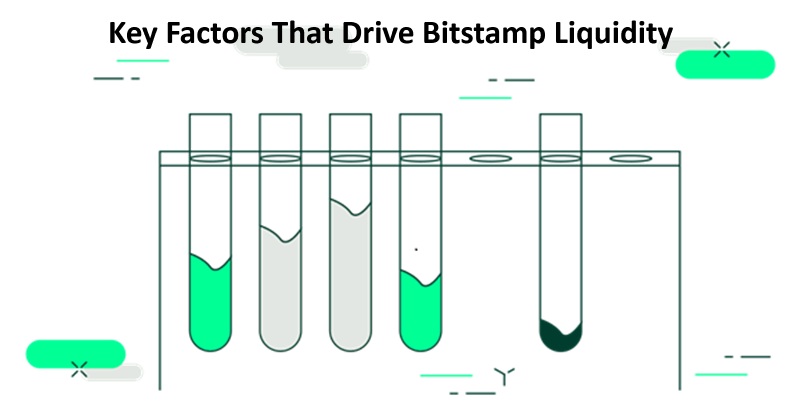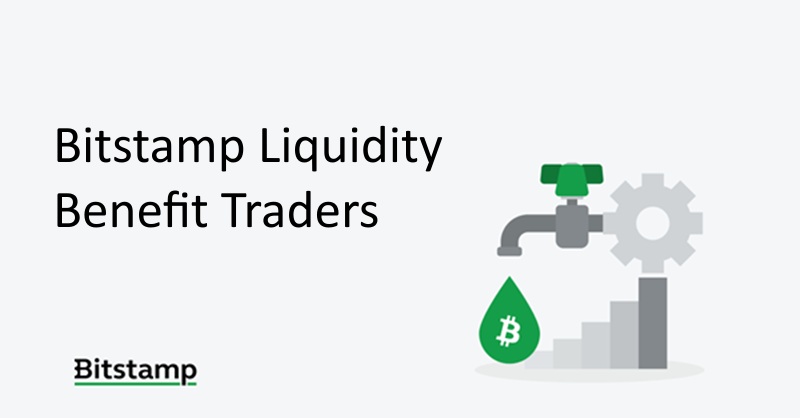
In the competitive world of cryptocurrency trading, liquidity is paramount. As traders and investors constantly look for ways to maximize their strategies, the ability to buy and sell cryptocurrencies without dramatically affecting their price is key. This is where Bitstamp Liquidity comes into play. As one of the oldest and most established exchanges in the crypto space, Bitstamp offers a strong foundation of liquidity, enabling traders to execute trades efficiently.
In this article, we’ll break down what Bitstamp Liquidity means, how it impacts the user experience, and why it’s crucial for successful trading. We’ll also explore key elements such as Bitstamp Trading Volume, Bitstamp Market Liquidity, and Bitstamp Order Book Depth that contribute to the platform’s overall liquidity and how you can use these features to improve your trading strategies.
What is Bitstamp Liquidity and Why Does It Matter?
Liquidity is the ability to buy or sell an asset without causing a significant impact on its price. When it comes to cryptocurrencies, liquidity is especially important due to the volatile nature of the market. Bitstamp Liquidity allows users to execute trades with ease, ensuring that their orders are filled promptly and at a fair price. A lack of liquidity can result in delayed trades or slippage, where the price at which the trade is executed differs from the expected price.

For CryptoExlist, understanding Bitstamp Liquidity is essential for traders who wish to make the most of their investments. If you’re trading large quantities of cryptocurrencies, you’ll want to ensure that the exchange you’re using has ample liquidity. This guarantees that you won’t experience significant price movements or order delays when buying or selling your assets.
The liquidity on Bitstamp is driven by a variety of factors, and it’s important to understand how these elements work together to offer a seamless trading experience.
Key Factors That Drive Bitstamp Liquidity
Several factors influence the level of liquidity on any exchange, including Bitstamp. Let’s take a look at the key drivers of Bitstamp Liquidity

Bitstamp Trading Volume
Trading volume is a critical indicator of liquidity. Bitstamp Trading Volume refers to the amount of a specific cryptocurrency that is bought and sold on the platform within a given period. A higher trading volume indicates greater market activity, which in turn contributes to better liquidity. More active trades mean there are more buy and sell orders available, reducing the chances of encountering slippage or delays.
On Bitstamp, high Bitstamp Trading Volume ensures that orders are filled quickly, and that large trades can be executed without causing significant fluctuations in price. Whether you’re executing a small trade or a large order, Bitstamp’s trading volume helps maintain a stable market environment.
How Does High Trading Volume Improve Liquidity?
- Reduced Slippage: With more trades taking place, the chance of price slippage decreases. Traders can execute large orders at prices closer to the expected value.
- Stable Price Movements: Active markets help maintain stable price movements, as the demand and supply of assets are balanced with minimal volatility.
- Efficient Order Fulfillment: More trades mean more buy and sell orders, which results in faster and more efficient order fulfillment.
Bitstamp Market Liquidity
Bitstamp Market Liquidity refers to the overall ability of the market to absorb buying and selling activity without substantial price fluctuations. In a liquid market, assets can be bought and sold quickly, at stable prices, with little to no slippage.
The level of Bitstamp Market Liquidity is influenced by a number of factors, including the number of active traders, the depth of the order book, and the availability of assets across various trading pairs. For traders, high Bitstamp Market Liquidity ensures that their orders can be executed quickly, whether they’re buying or selling cryptocurrencies.
Key Benefits of High Market Liquidity:
- Faster Execution Times: A liquid market allows traders to place and fulfill orders quickly without waiting for an ideal price to emerge.
- Tighter Spreads: With sufficient liquidity, the difference between the bid and ask price (the spread) narrows, offering better prices to traders.
- Minimized Risk of Slippage: When the market is liquid, there’s a lower chance of price slippage, making it safer for traders to enter or exit positions.
Bitstamp Order Book Depth
The Bitstamp Order Book Depth refers to the number of buy and sell orders available at various price levels. A deep order book indicates that there are numerous orders placed across a wide range of prices. This depth is crucial for liquidity because it ensures that large trades can be executed without drastically affecting the price.
A deep order book means that there is ample liquidity at multiple price points, which helps reduce volatility and slippage. Whether you’re executing a small trade or a larger one, the Bitstamp Order Book Depth ensures that there is enough buying or selling activity to fulfill your orders efficiently.
Why is Order Book Depth Important?
- Price Stability: A deep order book helps maintain price stability by absorbing large buy and sell orders without significant price changes.
- Large Orders: With a deep order book, traders can execute large orders without causing significant price movement or slippage.
- Market Liquidity: A deeper order book is a sign of a healthy, liquid market. The more buy and sell orders that are placed, the greater the liquidity available for all traders.
How Does Bitstamp Liquidity Benefit Traders?
Now that we understand the elements contributing to Bitstamp Liquidity, let’s look at how traders can benefit from a liquid market. Whether you’re a day trader, a long-term investor, or simply someone looking to trade cryptocurrencies, high liquidity offers several advantages

Lower Trading Costs
High liquidity usually results in tighter spreads. The bid-ask spread is the difference between the price at which you can buy an asset (the ask price) and the price at which you can sell it (the bid price). In liquid markets, this spread is typically smaller, which lowers the cost of trading. Traders who can access smaller spreads are able to buy and sell cryptocurrencies more efficiently, minimizing trading costs.
Quick Execution of Trades
One of the main benefits of Bitstamp Liquidity is the speed with which trades can be executed. In a highly liquid market, there is a constant flow of orders, which means that users don’t have to wait long for their orders to be fulfilled. Whether you’re executing a market order or a limit order, high liquidity allows for fast and seamless execution of trades.
Reduced Risk of Price Manipulation
In highly liquid markets like Bitstamp, the larger number of market participants reduces the risk of price manipulation. With more traders involved, it becomes harder for any single entity to influence the market price. This makes the trading environment more transparent and fair for all users.
Better Entry and Exit Points
When trading in a liquid market, it’s easier to enter and exit positions without experiencing significant price movements. For traders, this means they can take advantage of favorable market conditions and exit a position before significant price fluctuations occur. This is particularly important for day traders and those using short-term strategies.
Conclusion
In conclusion, Bitstamp Liquidity plays a pivotal role in the effectiveness of trading on the platform. With robust Bitstamp Trading Volume, solid Bitstamp Market Liquidity, and a deep Bitstamp Order Book Depth, Bitstamp provides a stable, efficient, and reliable environment for cryptocurrency trading.
For traders looking to make the most out of their crypto investments, understanding how liquidity works is essential. By choosing Bitstamp as your trading platform, you can benefit from faster execution times, reduced slippage, and better market conditions overall.























